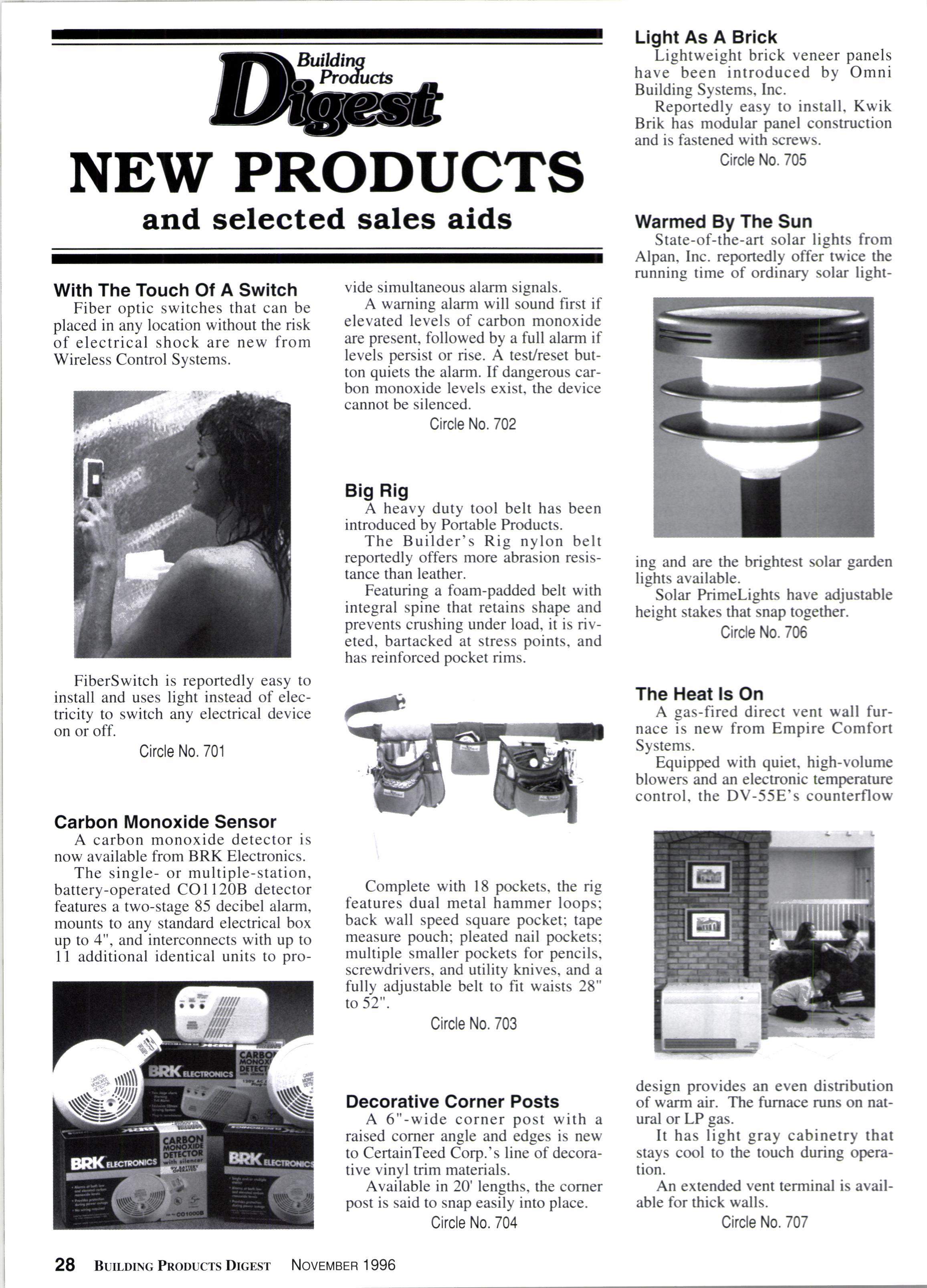
3 minute read
New home center study supports back belts
tD ACK support belts do indeed I-lreduce back injuries, according to a new study of 36,000 Home Depot employees.
Conducted by researchers at University of California at Los Angeles, the study may rejuvenate sales of back supports, which have plunged since a government agency announced two years ago it could find no evidence that the devices worked.
The study found back support devices reduced low-back injuries by about one third among employees at l7 Home Depot locations in California.
The study, none of it funded by manufacturers, covered a variety of back support products. According to the results, workers over age 55 or under 25 benefited most from the supports. Women, although they performed the same tasks, benefited less than men.
Researchers compared the inci-
Backs Are Basic For Safety Programs
Managed material handling consists of two elements, according to Donald Rung of Lumber Insurance Companies. The first is a comprehensive review of all mat€rial haadling exposures within your facility. At its most complete, this requires a rcview of how each class of product in your business is haadled or manipulated from tk time it is delivered from your supplier 0o the moment it is released to your custom€r.
The review should evaluate eac& product catego'ry in terms of its size, weight and handling characteristics and make a detsmination as to the safeet way to manipulfit€ the producL :
That determinatioa may requirc:
(1) Use of forklift, pallet jack, handtnrck or stock cart.
(2) Involvernent of two or more employees.
(3) Storage of tbat product in a specific location allowing optimum safe acsess to and travel with the prodwr
(4) Use of power tail gate lifts on delivery tnrcks. dence of lower back injuries before and after the company made such belts mandatory for all store employees by 192.
The second element is a mechanism that notifies all employees of the designated handling proccdues for each product and reviews any new product category and assigns an appropriate matcrial ftsndling strategy. This maneged marerial handling system requires rcgular review to ensure that specific strategias are being followedManaging for safe lifting behaviors is critical to tbe long-term control of back strain/back injury exposure. In too many cases, employen assu[rc that a one-tire class in safe lifting techniques is sufficient.
While it is important for employees to be trained in the fundamentals of safe lifting, fris is of little value unless mspgern€nt and supervisory personnel are committed to correcting inappropriate lifting be,havior and positively reinforcing properlifting behaviorm a daily basis. They must porposely watch for opportunities to reinforce employees who are demonstrating safe lifting tochniqucs.
Although Home Depot had no proof the devices worked, a spokesperson said, "we figured they couldn't hurt." Other employers discouraged workers from using the devices after the National Institute for Occupational Safety and Health in 1994, after reviewing the available scientific literature, concluded there wasn't sufficient proof to recommend that uninjured employees use the supports. Back belt sales, which reached eight million units in 1993, have fallen to four million last year.
Belt manufacturer Chase Ergonomics, Albuquerque, N.M., admitted the NIOSH report "really cast a pall over sales."
But NIOSH is anxious to find a remedy. "The economic costs of back
Story at a Glance
New research backs usefulness of safety corsets ...
36,000 workers at 77 Home Depots studied.
injuries are staggering," said NIOSH ergonomic director Lawrence Fine. He said a recent study showed the average cost of a low-back disorder is $8,300, more than double the average workplace claim.
According to government estimates, one-fourth of all workers' compensation claims paid by U.S. employers are lower back injuries, costing $l I billion in 1990.
The UCLA researchers advise that the question of the usefulness of back supports will not be senled until their results are duplicated in other companies and industries. NIOSH recently initiated a study of employees at WalMart stores.
If,/lTH housewraps becoming increasingly common in V V a wider range of construction applications, manufacturers are beginning to reformulate their multi-purpose products for specific uses.
Basically, housewraps provide three at-times-contradictory benefits: they cut down air infiltration, while providing moisture protection (keeping water from getting into a home) and breathability (letting moisture out of a home). Manufacturers are beginning to manipulate those three variables to produce different products with different strengths for specialized applications.
While a number of manufacturers are developing such products, the first out of the gate is DuPont with their new Tyvek HomeWrap. The new non-perforated, spun-bonded polyolefin sheeting reportedly is SOVo better at resisting water than their original housewrap, while providing twice as much air resistance for improved energy efficiency.
A new manufacturing/finishing process allows properties ofthe sheeting to be reconfigured, for the critical needs of each application. HomeWrap was designed specifically to protect against bulk water penetration and to protect the










